Ghost Guns: A Year in Review

The Death of Gun Control?
One year ago, the folks of Defense Distributed reached a landmark settlement with the US Department of State, allowing the group to freely publish files pertaining to arms manufacture without violating ITAR. The age of the downloadable gun had formally begun, but dark figures loomed over the horizon. Within a week of DefDist publishing their files under license from the Department of State, DefDist was sued by over 20 states, and a federal judge from the Western District of Washington forced the company to pull their files from their online repository DEFCAD. Within a few months, the New Jersey Legislature passed SB 2465 which criminalized online speech related to the manufacture of firearms, but the biggest hit to DefDist was the arrest and subsequent resignation of Cody Wilson, their founder and public face. Although his arrest was a heavy blow to the company, there was still much work to be done. How far have we gone since then?
With Cody gone, Paloma Heindorff was next in line to head Defense Distributed. Until this point, she was almost unheard of by the public at large. Given her much lower profile, her British origins, and that she hadn’t even fired a gun until joining DefDist, many were worried that she would either stray from the company’s original vision, alter it completely, or bring DefDist down altogether. But it’s safe to say that she hasn’t done any of those things. Although public interviews are now few and far between, DefDist is still hard at work on the Ghost Gunner 2, and is busy fighting the state of New Jersey in court to this day. You can contribute to their court battle by buying merchandise like the GG2, donating to the Second Amendment Foundation, or through membership to DD LEGIO, their association which raises funds for both their legal fees and R&D.
The Ghost Gunner 2, a machine that I’ve reviewed in the past, has expanded its capabilities thanks to both DefDist and a community willing to test the limits of the open-source machine. First from DefDist was the release of Polymer80 milling code. While a GG2 is completely unnecessary and serious overkill for the completion of a Polymer80 frame, this only increases the versatility of the machine and furthers the materials it can be programmed to mill. For fans of the classics, the team at DefDist released new milling code allowing the GG2 to mill 1911s of alternate calibers including 9mm, .38 Super, .40 S&W, and 10mm. DefDist also made strides in GG2 availability, setting up a network of authorized dealers and shortening lead times from a couple months like my machine to within a week of ordering. From the GG2 user group on Facebook we’ve received optimized milling code for AR-15 and AR-10 lowers, new code and fixtures for pistol-caliber carbine lowers (AR-9/40/45 etc.), and GhostWriter, a 3rd-party custom engraving service where user-uploaded photos are converted to gcode for use with 3D-printable jigs and an engraving bit. But enough about the Ghost Gunner, let’s see what others have been up to!
Anons Spread the Signal
FOSSCAD
With the release of the Liberator in 2013 starting the age of the digital gun, it wasn’t long before others sought to improve on the design and release their versions to the public. But with the first closing of DEFCAD, the people of the internet had to form a new community of their own. Enter Free Open Source Software & Computer Aided Design, or FOSSCAD for short. FOSSCAD is a decentralized community of internet anons who have dedicated at least some of their time to open source design and manufacture, taking special interest in the field of firearms. Since 2013 they have been at work creating, releasing, and updating firearms related CAD files ranging from ammunition reference models all the way to complete firearms like the Liberator and hosting them online. They are constantly adding new files to their Github repository, and their IRC is active for anyone who wishes to get in contact and contribute files of their own.

Deterrence Dispensed
Within FOSSCAD’s myriad list of contributors exists Deterrence Dispensed, and while their name may be a bit tongue-in-cheek, their intent is nothing but serious. While DefDist is embroiled in their legal battles and FOSSCAD updates their repository without making much of a scene, DetDisp has been loudly proclaiming their creations to the world with boisterous PR videos from their spokesman Ivan the Troll. DetDisp has been hard at work, currently focusing on 3D-printable firearms and magazines that anyone can make at a low cost, as all of their 3D-printable designs can be easily made on a $200 3-D printer. Though DetDisp has had some of its social media presence erased by statist lobbying, their files have spread like wildfire and can be found both in the FOSSCAD repo as well as their own repository on spee.ch, a decentralized file hosting service. To learn more about Deterrence Dispensed, check out our podcast with Ivan and jstark!
Notable Releases
https://www.youtube.com/watch?v=aTW7OF4k55Q
Freeman’s Glock 17
Modeled by FreeMenDontAsk and published by Deterrence Dispensed, the Freeman’s Glock 17 is a fully printable frame with included plans for DIY locking block and rear rails. The frame, which is legally considered a firearm and is a regulated part in the US, can be printed in easily available PLA plastic on a $200 3D printer, and the rails can be made out of aluminum bar stock with basic hand or power tools. Glock frame parts kits go for $70 at Brownells, and complete slide assemblies go for around $300-$400. Released on 03/17/19
Freeman’s Ghetto Blaster
Modeled by FreeMenDontAsk and published by Deterrence Dispensed, this gun has had a bit of an identity crisis. Call it Ghetto Blaster, GB-10, or GAB-10 depending on your mood, the Freeman’s Ghetto Blaster is a fully 3D-printable TEC-9 lower receiver. What makes the Ghetto Blaster different from a normal TEC-9/AB-10 is that not only is it designed to accept Glock magazines (including the Menendez mags below!), but it also has provisions for attaching a pistol brace if you so desire. Can be printed out of readily-available PLA plastic on a $200 printer, with the necessary parts to complete the firearm being available for around $330. Released on 05/09/19
The Menendez Mag (3D Printable Glock 17 AND Glock 19) Files are NOW LIVE!! Happy 4th!
byu/Deterrence_Dispensed inguns
Menendez & Mini Menendez Glock Magazines
Released this past Independence Day by Deterrence Dispensed, the Menendez & Mini Menendez are fully printable (sans springs) magazines for the Glock 17 and 19 respectively. Following Defense Distributed’s convention of naming printable firearm magazines after hoplophobe politicians (Cuomo for their AR-15 mag and Feinstein for their AK-47 mag), the Menendez magazines are named after Bob Menendez, the NJ senator who had Ivan suspended from Twitter. The Menendez Mag only uses $0.81 of printed material (PLA) and can be made in approximately 5 hours on a $200 3D printer. Although springs are easily bought worldwide on sites like Amazon, a spring bending jig is in the works to make the magazine completely DIY.
Stuff You May Have Slept On
 DetDisp Reference Models and Technical Data Packages
DetDisp Reference Models and Technical Data Packages
After Defense Distributed released their CAD models to the public it was later discovered that many dimensions and measurements were inaccurate, most notably on their AR-15 reference model. DetDisp set out to work, obtaining Colt drawings through a FOIA (Freedom of Information Act) request, correcting all the mistakes they could find, and re-releasing the model with a Technical Data Package (TDP) containing said drawings. DetDisp has gone so far as to claim that their reference model is the most accurate model of a completely assembled AR-15 in the public domain. DetDisp has also released a CAD reference model of a M-16 fire control group, along with TDPs of a whole bookcase of firearms like the PPSh-41, M-14, MP5, M-79 “Thumper”, and many more.
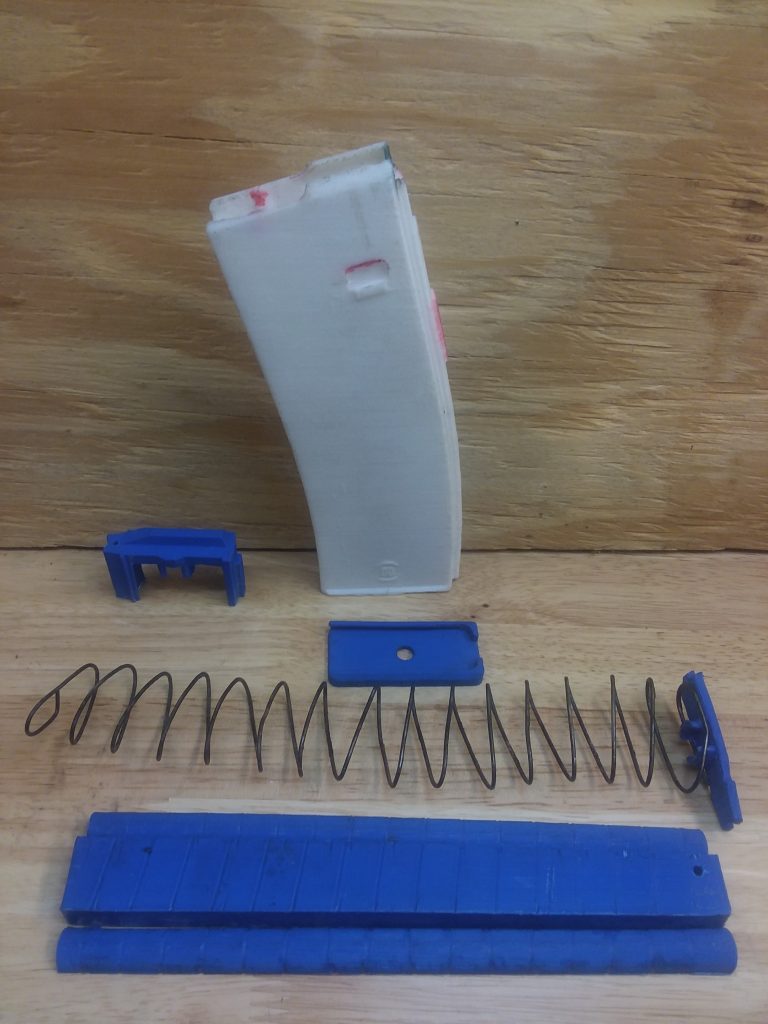
DetDisp 100% DIY AR-15 Mag
Although Defense Distributed’s Cuomo magazine has been demonstrated to hold up well under full-auto fire, it was made on a SLA (stereolithography apparatus, think lasers and liquid) printer and used store-bought springs. While SLA printers have decreased in price, they are still out of reach of most consumers and hobbyists. DetDisp’s magazine was designed to be easier to print using inexpensive FDM (fused deposition modeling, think plastic filament) printers, and includes a jig for bending magazine springs out of music wire allowing the entire magazine to be built entirely from scratch.
DIY ECM Rifling
Making rifled barrels, once seen as a bottleneck for the home gunsmith, has never been easier thanks to electrochemical machining (ECM). Although ECM has been in use for many years by companies like Smith & Wesson, only recently has it been scaled down for the home gunsmith with detailed documentation. The setup uses no moving parts or complex machinery to create rifling, using only saltwater, electricity, and a 3d-printed jig to etch rifling into tubing in under 30 minutes. This is especially good news for home gunsmiths who wish to make barrels out of more exotic metal alloys, as the tubing being etched only needs to be electrically conductive and requires no stress relief or heat treating for post-processing. In addition, the fact that the jig’s geometry can easily be changed, one can freely experiment with rifling geometry: twist rates, number and depth of lands and grooves, polygonal rifling, even properties like progressive/gain-twist rifling can easily be achieved with little cost. The complete process can be viewed here and a video tutorial by Ivan of DetDisp is available.
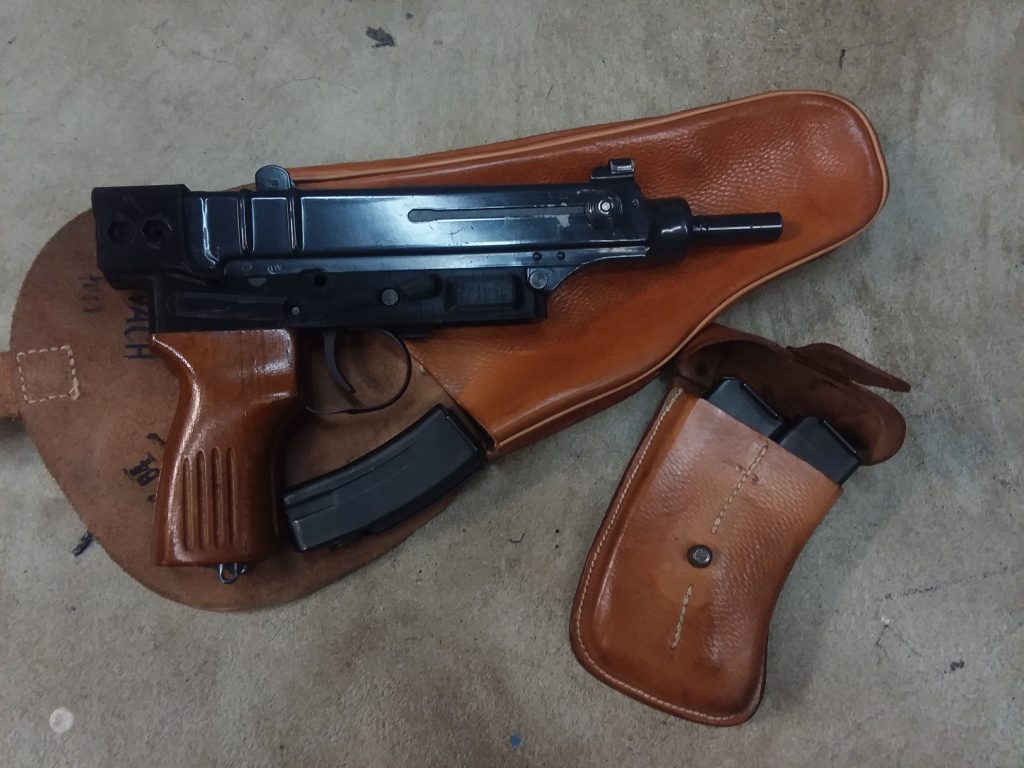
FreeMenDontAsk’s Printable vz. 61 lower
For those who are fans of Czechnology, FreeMenDontAsk has published a model of a Skorpion lower receiver on both the FOSSCAD repository and DetDisp’s spee.ch channel. Complete parts kits with stocks are available for around $400 if you do some hunting, just don’t do anything too fun and make sure you have a good dog sitter.
Things to Look Forward To
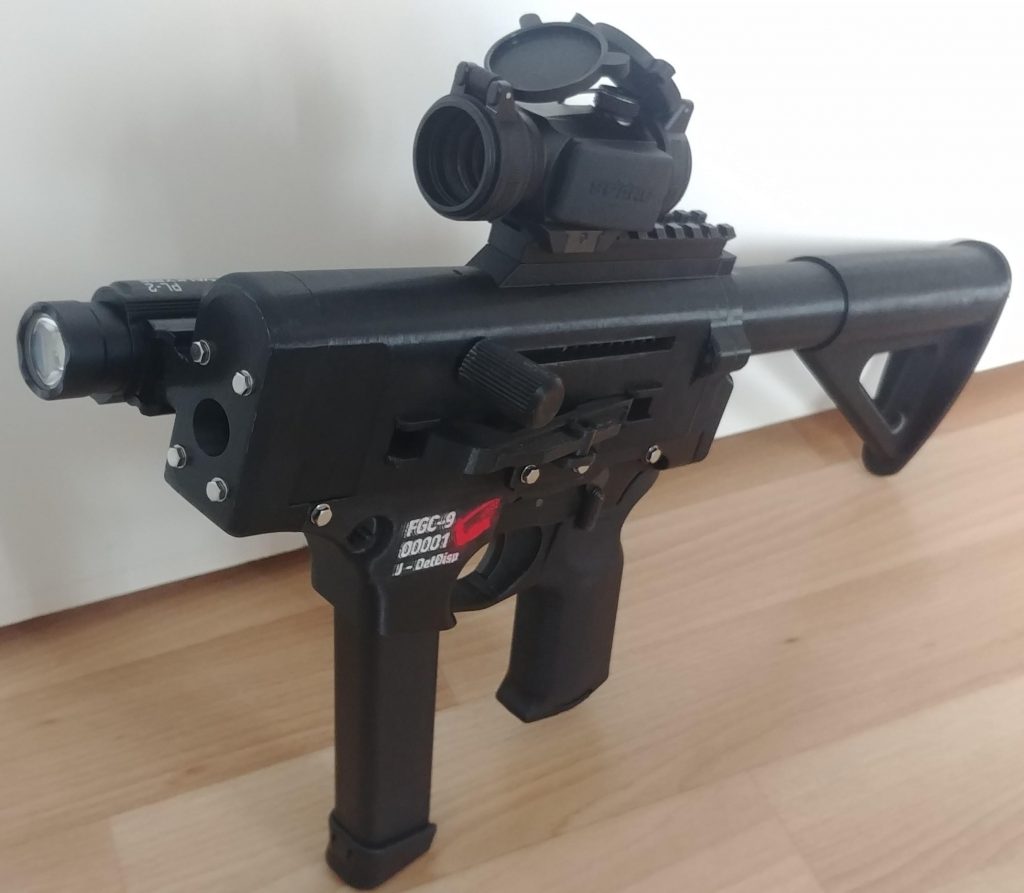
A nearly complete FGC-9, sans barrel.
Project ButWhatAbout
On a quest to make a gun using zero legally defined gun parts with EU laws as a benchmark, Project ButWhatAbout is a 21st-century realization of the Luty SMG. Using modern manufacturing methods like 3D-printing and ECM, the efforts of Project ButWhatAbout have culminated in what is now known as the FGC-9 (Fuck Gun Control). Currently being developed by members of Deterrence Dispensed, the FGC-9 is a 9x19mm firearm based on the Shuty AP-9 by FOSSCAD contributor “derwood”. The FGC-9 uses Glock magazines, and unlike the AP-9 which uses a store-bought Glock barrel, the FGC-9 uses a homemade ECM barrel.
KadeCAD Printable Suppressor Baffles
Currently being developed by KadeCAD and DetDisp member jstark1809, the everyman’s suppressor is within reach. Using a Napa 4003 fuel filter or equivalent as a housing, one can cheaply manufacture suppressor baffles on a $200 3D printer at home with no hand tools whatsoever. These baffles are disposable, but by no means are they fragile. Current testing has shown that when printed in standard PLA plastic, the baffles can withstand 150 continuous shots of .223 Remington ammunition. Use of more heat-resistant plastics like PLA+ will increase the lifespan of the baffles, but even if the baffles are made of less durable material the costs of reprinting them should cost less than the ammo used to destroy them. Again, don’t do anything too fun and make sure you have a good dog-sitter.
Dagny Dagger
Currently in its early stages of development, Atlas Arms seeks to bring armor-piercing ammunition back where it should be: in the hands of the masses. The Dagny Dagger is touted to be a multi-role projectile with armor-piercing capability as well as good expansion upon impact with an unarmored target. Atlas Arms will remain in compliance with the ATF and ensure the Dagger remains outside of its definition of armor piercing ammunition. This will make the Dagger legal to manufacture at home, and the company will provide gcode of the projectile for the Ghost Gunner 2 CNC mill along with loading data upon completion of development. The Dagny Dagger is currently being crowdfunded on GunDynamics with a projected date of release about 6 months after funding is complete, being mostly dependent on ATF Determination Branch reply times.

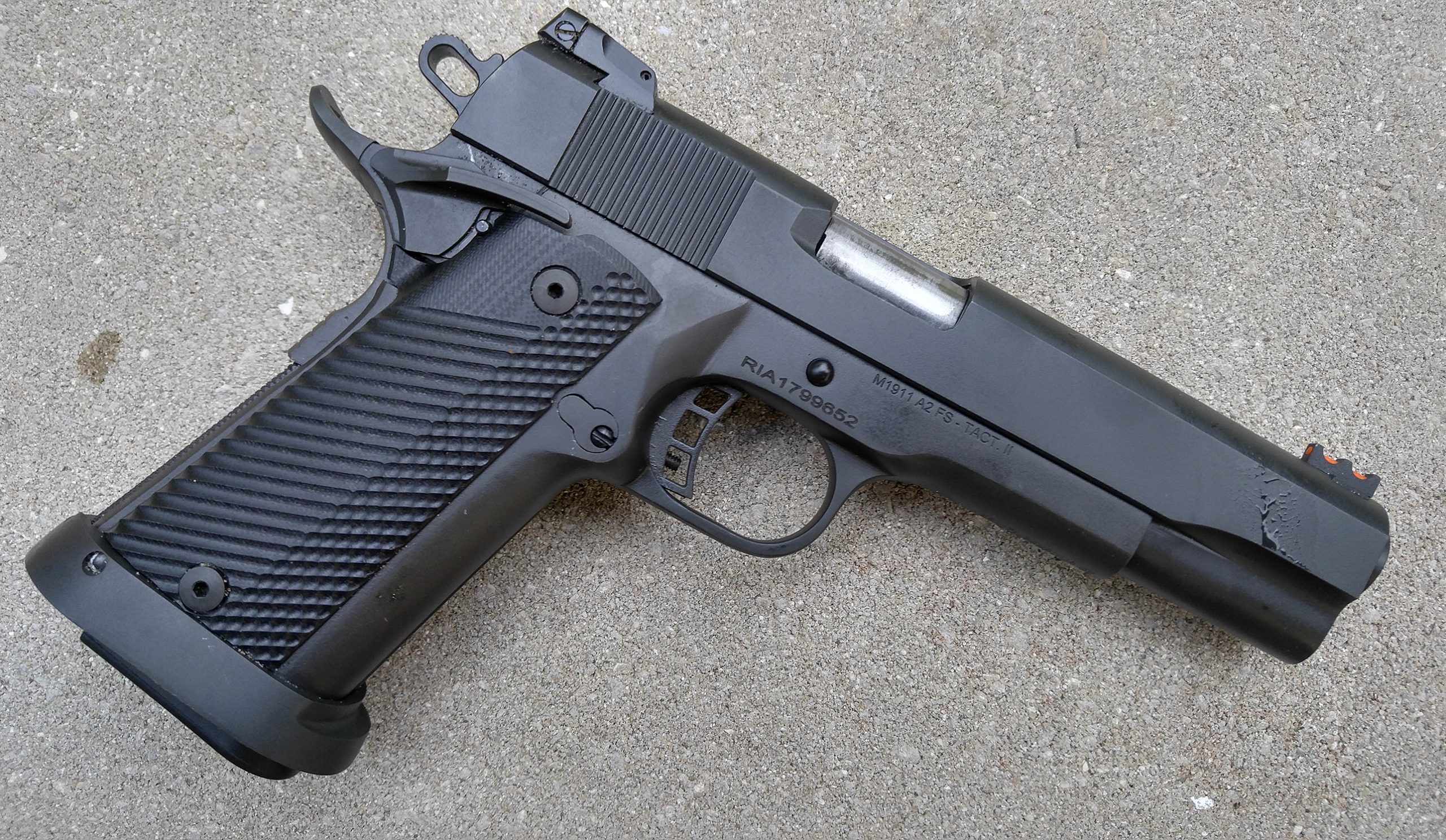
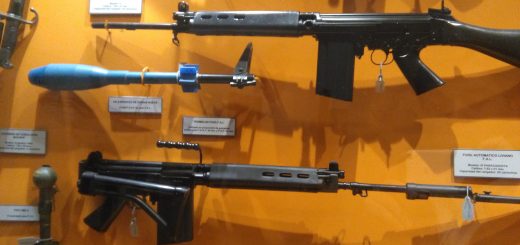
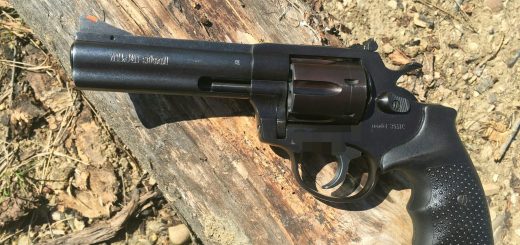


1 Response
[…] Some reasons to make your own rifled barrel are; for experimental purposes, proof of concept, pride in craftsmanship, or political reasons. What Ivan the Troll has done fulfills all those purposes. One character in the expletive in the following quote was altered. From project ButWhatAbout: […]